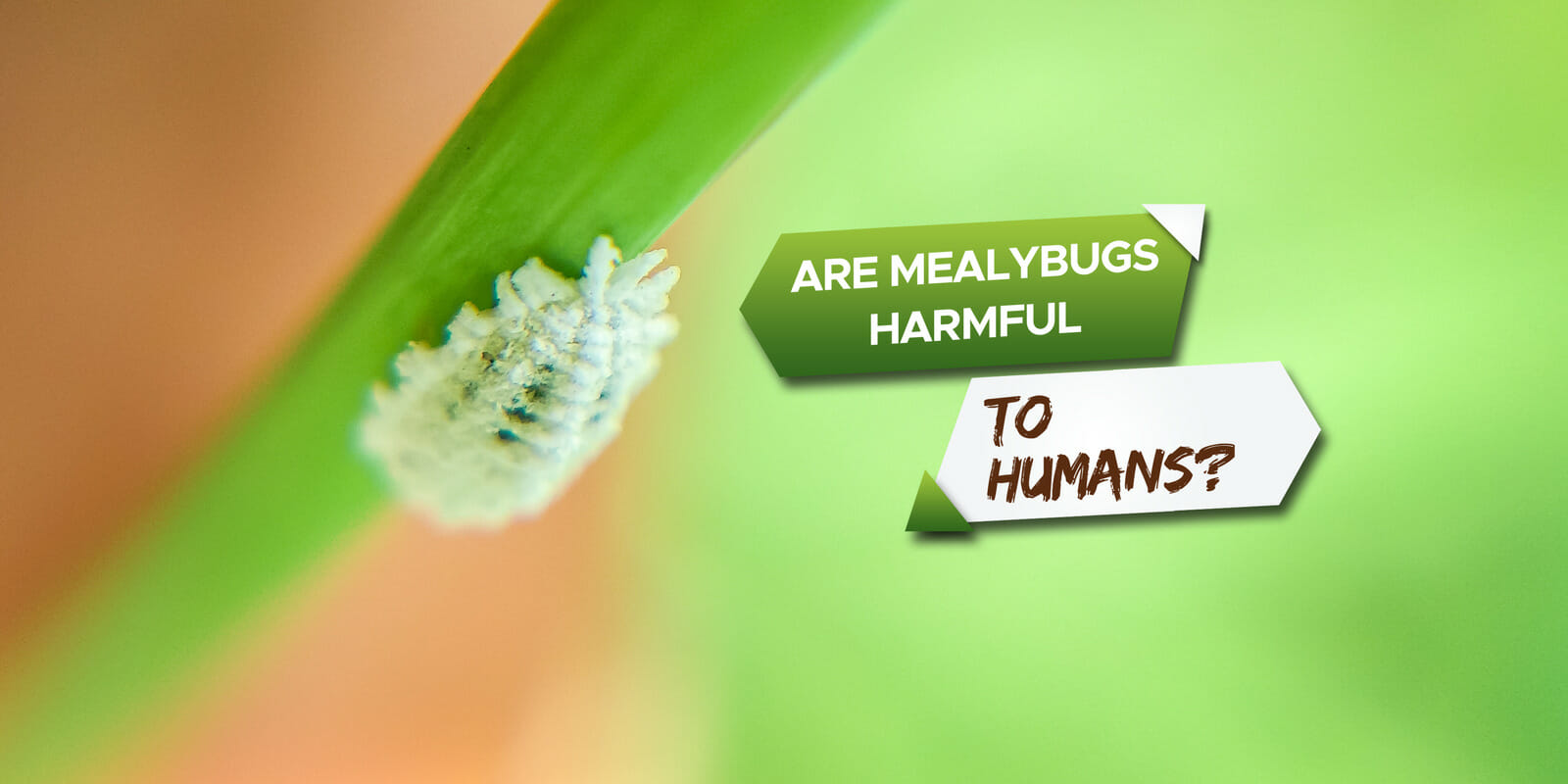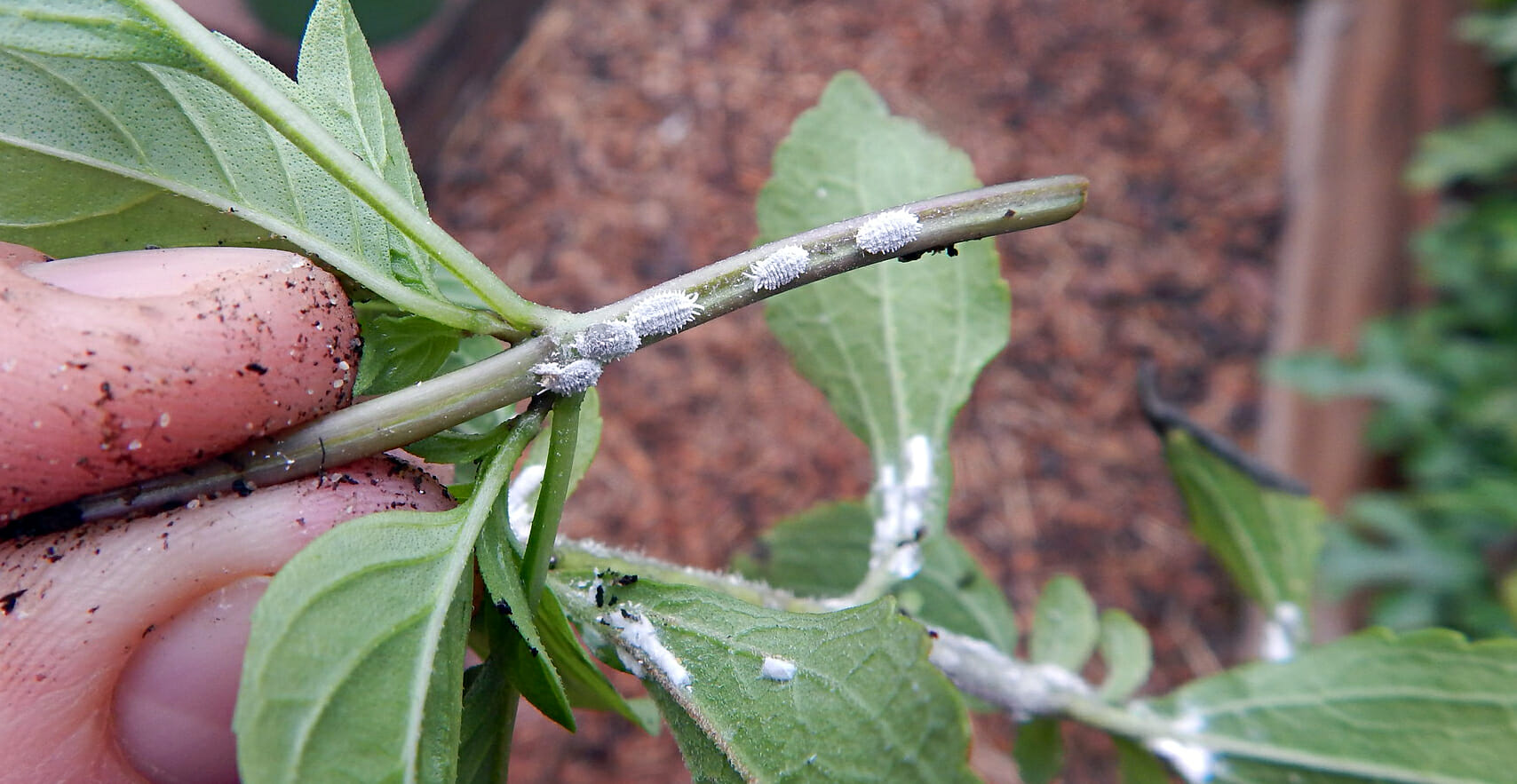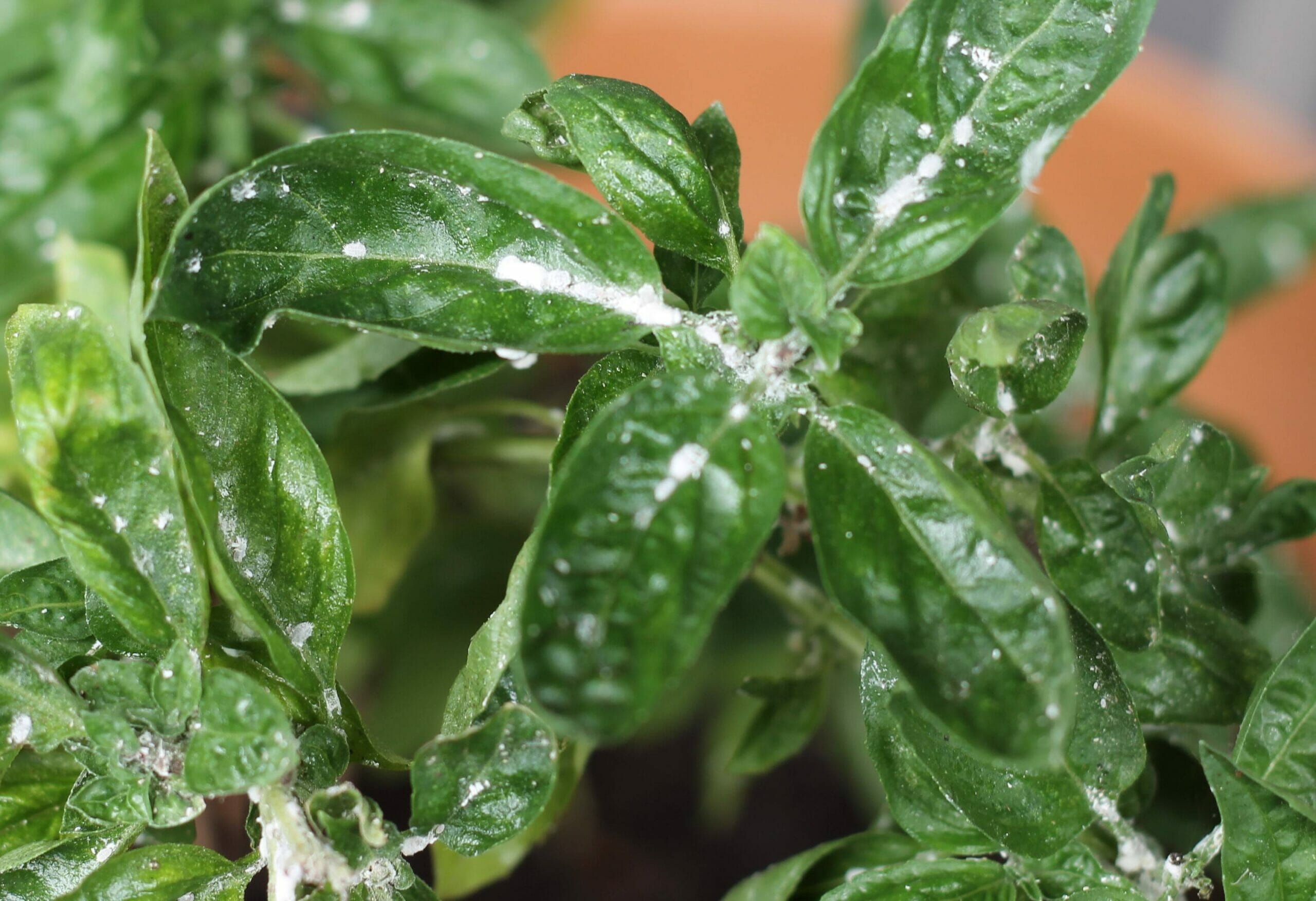Mealybugs are nasty little critters that can cause a lot of damage to plants. Not only do they suck the sap out of the plants, but they also spread viruses. But do they pose a threat to humans?
So, are mealybugs harmful to humans? Mealybugs are not a cause for concern and don’t pose a threat to humans. They rarely bite and they don’t spread diseases to people, but that doesn’t necessarily mean they don’t cause any harm at all.
Some people may have an allergy to the sticky residue they leave behind, also known as honeydew. They can also attract other pests and spread diseases to your plants, so it’s best to take care of a mealybug infestation as soon as possible.
In this article, we’ll discuss how to handle a mealybug infestation and go over the possible harm that mealybugs can cause not only to yourself but to your plants.
How to Identify a Mealybug Infestation
So you may have noticed a white fluffy mass growing on your plant, and you’re wondering what it is. If you’re never encountered mealybugs before, you may not know exactly what they are or what to do about them. By properly identifying the problem, it could lead to faster treatment.
Mealybugs are small, oval-shaped insects that are covered in white cottony wax. They have long legs and antennae, and they typically feed on the underside of leaves. There are more than 2,000 species of mealybug found around the world, but not all of them are considered garden pests. Check out this chart to learn to identify the most common types of mealybugs:
| Type of Mealybug | Appearance | Where They’re Found |
| Long-tailed Mealybug | Small, white, and oval-shaped. Usually up to ⅛” long with long “tail” filaments that are usually longer than its body. | Long-tailed mealybugs are located on every continent and are considered a common pest. They’re found outdoors in warm weather. |
| Mexican Mealybug | About ¼” long and oval with thin white waxy secretions and about three white waxy ridges down its back. | It is originally from Mexico, but has spread throughout the United States, Cuba, Puerto Rico, and Hawaii. Mainly found in tropical climates. |
| Citrus Mealybug | They are pinkish or orange in color with no noticeable “tail”, but short filaments surrounding their bodies. They have a white waxy outer cover. Occasionally, they have a dark running stripe across their back. | They are commonly found in warm and humid areas where citrus grows. They tend to cluster in citrus trees, but they can go after indoor plants as well. |
| Gill’s Mealybug | Usually pinkish-grey in color with two dark stripes along their back. They also have the signature waxy secretions you’d find with other mealybugs. | They are mainly located in the southeastern United States and California and are commonly seen in vineyards. They are also sometimes found as far north as Oregon. |
| Grape Mealybug | Very similar in appearance to other mealybug variants, with a small, flat oval shape and white, waxy texture. Most notably identified by its reddish-brown excretions. | Grape mealybugs are often found on grapevines and in climates where grapes grow. They were first found in California in the United States, but can be found anywhere grapevines are able to thrive. |
What Causes a Mealybug Infestation?
Mealybugs seemingly appear out of nowhere, but oftentimes, they’re brought into your home by way of another plant from the nursery or plant store, according to Leaf and Clay. Mealybugs are highly attracted to moisture, so they often gravitate to over-watered plants.
Mealybugs are attracted to plants with high nitrogen levels and soft growth; they may appear if you overwater and over-fertilize your plants.
Both indoor and outdoor plants attract mealybugs. The pests will attack a wide range of vegetation, including fruit trees, gardenias, African violets, and more. Mealybugs hide beneath leaves and flower petals, making their tiny bodies even harder to spot.
How Do You Know if You Have a Mealybug Allergy?
Mealybugs are common pests found on indoor and outdoor plants. They suck sap from the plant, causing it to wilt and die. Mealybugs produce a sweet honeydew secretion that often coats the leaves and stems of infested plants. Honeydew is a sticky, sweet liquid that attracts ants and wasps.
In some cases, humans can be allergic to the honeydew it produces and notice side effects when coming into contact with infested plants. Some signs of a mealybug allergy include:
- Itchy skin
- Sinusitis
- Rashes and redness
- Asthma
If you think you may have a mealybug allergy, you should see an allergist for testing. Mealybug allergies are not as common as other types of allergies, but they can be very serious.
How to Treat a Mealybug Infestation
Mealybugs are a common pest that can cause significant damage to many types of plants. Left untreated, mealybugs can kill plants. They are typically found on the underside of leaves and on stems.
- Identify the root of the problem and be sure that what you have is a mealybug infestation. Mealybugs are relatively simple to identify
- Separate the infested plants from your healthy plants as soon as you notice the presence of mealybugs. You want to prevent the infestation from spreading by isolating the affected plants.
- Try using a horticultural oil or soap spray. Spray your plants with a combination of 1 tablespoon dish soap and 1 quart of water, and this should help suffocate the mealybugs quickly and effectively.
- You can consider a heavier insecticide, but this isn’t recommended if you live with animals and children, or in a small space without much ventilation.
- Contact a pest control professional and have them treat the infestation. If all else fails and home remedies aren’t effective, a professional can quickly identify the root of the infestation and get it under control.
DON’T MISS: Mealybug infestation on your succulents? Learn how to treat it here.
Frequently Asked Questions:
How can I avoid a mealybug infestation?
The best way to avoid a mealybug infestation is to be proactive! Inspect your plants regularly for any signs of mealybugs, such as:
- White, cottony masses on the stems or leaves of plants
- A sticky film on the leaves or stems of plants
- Black or brown spots on the leaves
If you do notice any of these signs, take steps to get rid of the mealybugs as soon as possible.
Can plants recover from mealybugs?
In most cases, the damage done to plants won’t cause permanent damage, and your beloved houseplants can continue to grow and recover with little assistance. But in some cases, if the infestation isn’t dealt with quickly, your plant could be a lost cause and the best solution could be to burn it, to avoid spreading the disease to other plants, indoors and outdoors.
How do you treat honeydew allergies?
First and foremost, if you find yourself experiencing allergy symptoms and you’re worried it has to do with a mealybug infestation, visit your primary care provider as quickly as possible so they can assess your symptoms and provide you with the right treatment. Just as importantly, you need to get the mealybug infestation under control as quickly as possible, whether by treating the infestation with the tips above or destroying the plant completely. Only eliminating the infestation will keep you from experiencing the symptoms again.
Conclusion
Mealybugs are a common pest that can be found in both outdoor and indoor environments. They are small, white, and fluffy, and often go undetected until they’ve caused significant damage. While mealybugs are not considered harmful to humans, they can still be a nuisance. If you are experiencing a mealybug infestation, be sure to do your research and find a trusted pest control company to help you get rid of them.
Hopefully, you’ve found this article informative and you now have a little more knowledge about mealybugs. Despite the myths, mealybugs likely won’t harm you in any way or spread disease, but it’s important to get the infestation under control for the sake of your plants.





